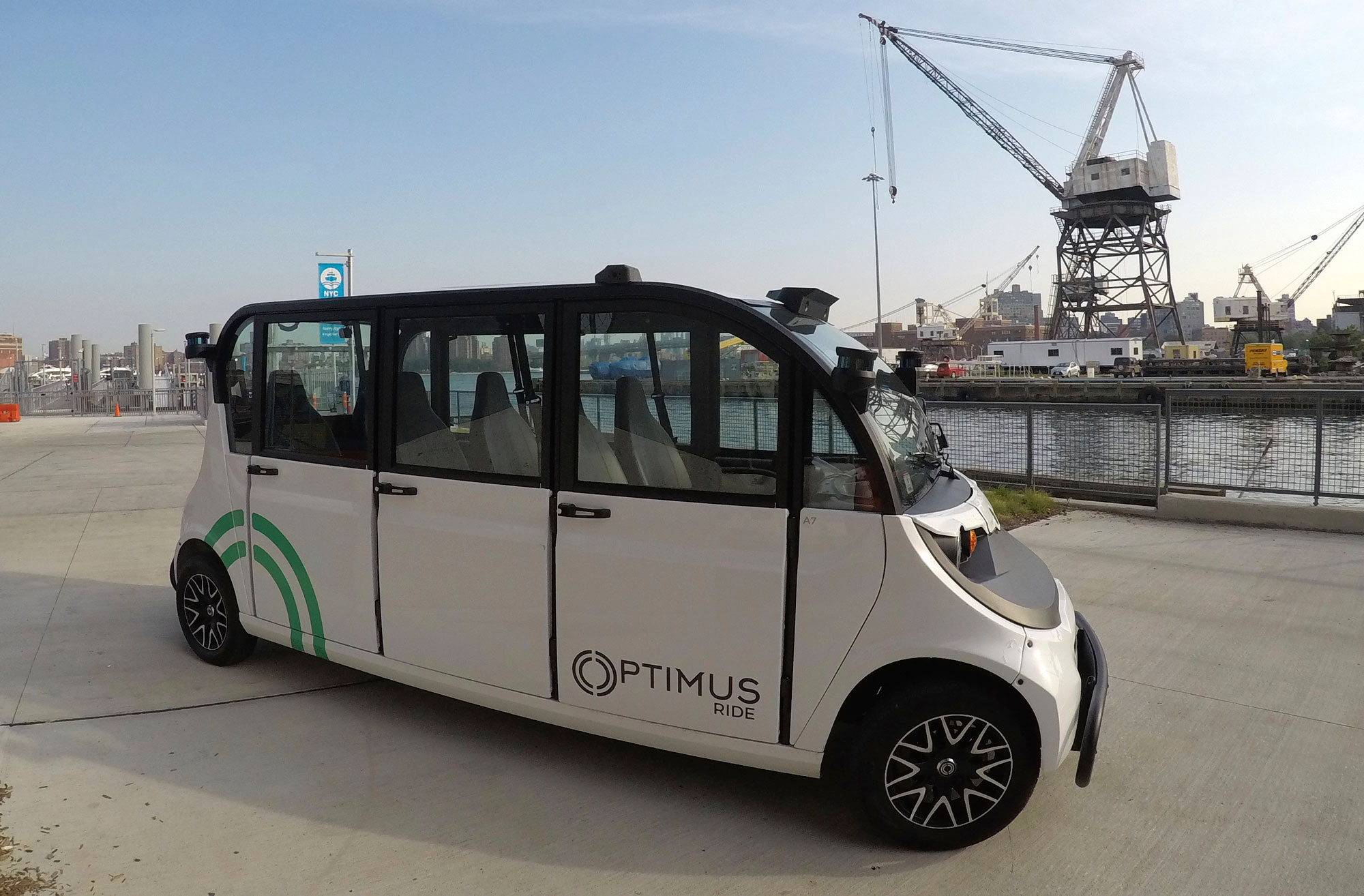New York City’s first self-driving shuttle service launches today

Six autonomous six-seater shuttles will be offering free rides around a one-mile loop of New York’s Brooklyn Navy Yard.
If you can make it here ... : It’s the first driverless car service to launch in the Big Apple (most trials in the US have taken place in Arizona). The yard offers rides on a set loop in a predictable environment, though, so we’re still a long way from setting the technology free in the famously chaotic streets of Manhattan.
That said: It’s a first step. The cars are being operated by Optimus Ride, a company that spun out of MIT in 2015. The service will operate continuously between 7 a.m. and 10:30 p.m. every weekday.
Falling out of love: The hype around fully autonomous vehicles has subsided, as the breathless promises of launches in 2020 hit the hard reality of complexity and failure. A woman was killed by a self-driving car being tested by Uber last year, and three Tesla drivers have died while relying on their autopilot systems. So what, say the technology’s boosters? People are killed every day by human drivers. That’s true. But the reality is that most people are still reluctant to trust machines to drive them, and there’s a long way to go to persuade them otherwise.
Sign up here for our daily newsletter The Download to get your dose of the latest must-read news from the world of emerging tech.
Keep Reading
Most Popular
Large language models can do jaw-dropping things. But nobody knows exactly why.
And that's a problem. Figuring it out is one of the biggest scientific puzzles of our time and a crucial step towards controlling more powerful future models.
The problem with plug-in hybrids? Their drivers.
Plug-in hybrids are often sold as a transition to EVs, but new data from Europe shows we’re still underestimating the emissions they produce.
Google DeepMind’s new generative model makes Super Mario–like games from scratch
Genie learns how to control games by watching hours and hours of video. It could help train next-gen robots too.
How scientists traced a mysterious covid case back to six toilets
When wastewater surveillance turns into a hunt for a single infected individual, the ethics get tricky.
Stay connected
Get the latest updates from
MIT Technology Review
Discover special offers, top stories, upcoming events, and more.